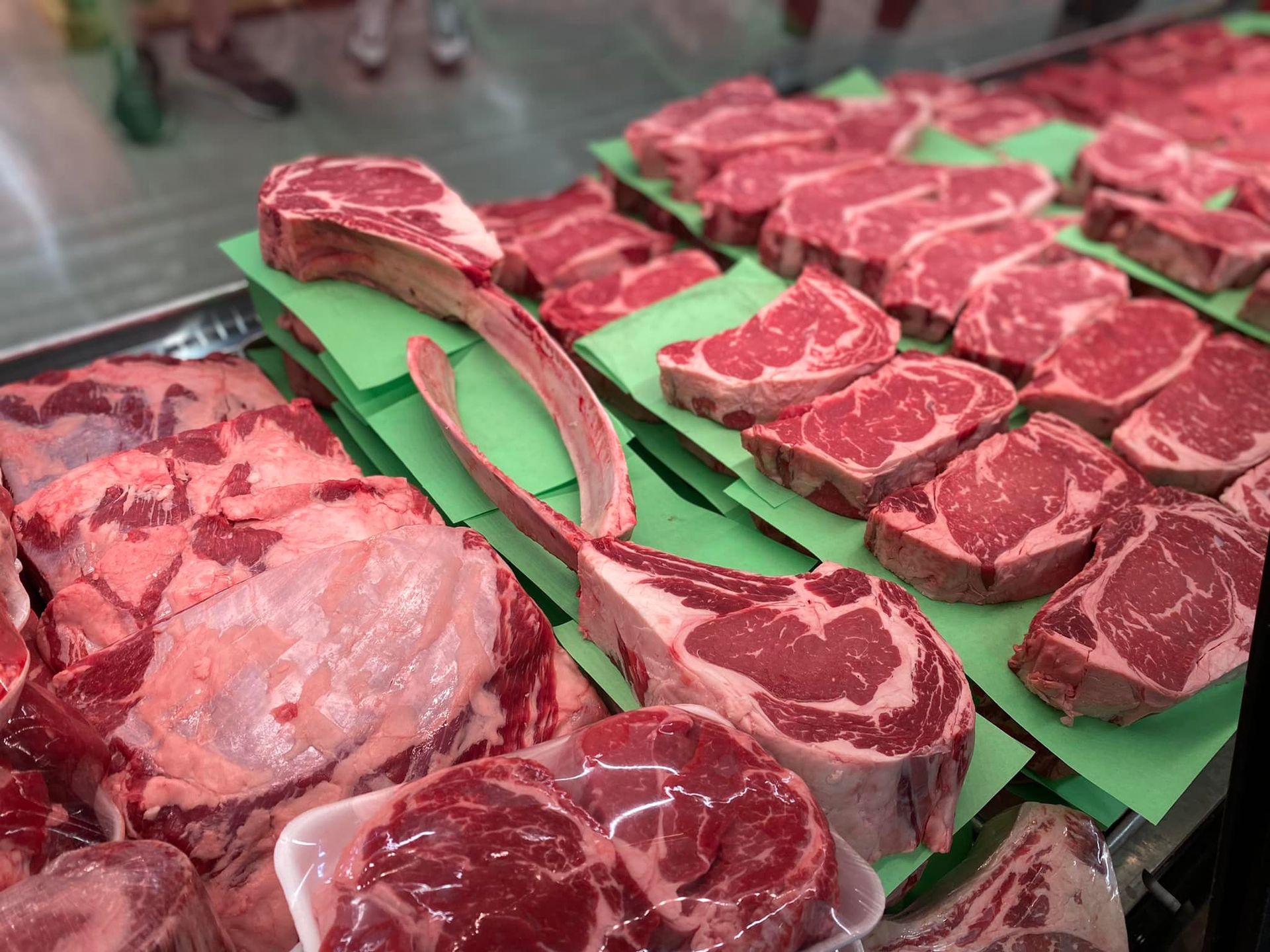Your Comprehensive Source for Professional Tips on Navigating the Meat Market Scene and Making Informed Acquisitions
Browsing the world of meat buying can often feel like a complicated puzzle, with various cuts, qualities, and labels including layers of details to the decision-making process. By mastering the art of picking fresh, quality meat and learning to involve properly with butchers, people can not only enhance the flavors on their plate but additionally make certain decisions that line up with their preferences and values.
Recognizing Different Cuts and Grades
When it comes to buying meat, comprehending the distinctions in between numerous cuts and grades is necessary for making notified selections at the market. The cut of meat refers to the particular muscular tissue group from which the meat is sourced, while the grade is a top quality designation based on aspects like marbling, inflammation, and maturation of the animal. It's vital to consider the cooking approach when selecting a cut and grade of meat-- for example, well-marbled cuts like ribeye are great for grilling, while leaner cuts like sirloin may be much better matched for roasting or braising.
Picking Fresh and Quality Meat
To guarantee optimal taste and security in your dishes, it is critical to meticulously select fresh and top quality meat when buying at the market. When selecting fresh meat, search for cuts that have a dynamic color, company appearance, and are damp yet not slimy. The shade of the meat need to be specific to the type you are purchasing; for example, beef needs to have a bright red tone, while pork must be more pinkish. Avoid meat with any off-smells, discoloration, or excessive liquid in the product packaging, as these can be signs of putridity.
Checking for suitable labeling, such as USDA grades or certifications, can further assure you of the meat's top quality and safety. By being vigilant in your selection process, you can enjoy scrumptious and risk-free meals made from fresh, high-quality meat.
Decoding Labels and Certifications
Comprehending the tags and accreditations on meat items is crucial for making educated decisions about the top quality and origin of the meat you acquire. When navigating the meat market scene, it's important to look for labels such as "USDA Certified Organic," which shows that the meat was generated following rigorous organic requirements without making use of artificial pesticides, antibiotics, or hormones. An additional essential tag to view for is "Grass-Fed," which suggests the animals were fed a diet regimen mostly including yard or forage. This label usually suggests a leaner item with higher levels of omega-3 fatty acids.


Certifications like "Animal Welfare Accepted" or "Qualified Humane" symbolize that the pets were raised in gentle problems, with accessibility to exterior areas and moral therapy. On the other hand, "Non-GMO Project Verified" shows that the meat originates from pets that were not fed genetically changed microorganisms. By comprehending these accreditations and labels, customers can make even more ethical and lasting options when acquiring meat products.
Involving With Butchers for Assistance
Making educated options regarding the meat you get can be better boosted by seeking advice from seasoned butchers who have important expertise regarding different cuts, high quality, and sourcing practices. Butchers are knowledgeable specialists who can supply insights right into the ideal cuts of meat for specific meals, advise different options based on accessibility or budget plan, and offer recommendations on appropriate handling and storage space to maximize quality and taste.
Involving with butchers allows consumers to ask concerns regarding the resource of the meat, including whether it is in your area sourced, natural, grass-fed, or sustainably increased. By cultivating a relationship with a trusted butcher, consumers can get a much deeper understanding of the meat they buy, guaranteeing that it straightens with their preferences and worths.
Furthermore, butchers can share cooking tips, dish pointers, and also butcher special cuts to fulfill specific choices. Their knowledge extends past just marketing meat; this hyperlink they can aid in meal planning, portion sizing, and give recommendations on complementary active ingredients to develop delicious and all-around dishes - Bagley Farms Meat Market. By leveraging the understanding and experience of butchers, customers can make more informed decisions when browsing the meat market scene

Taking Full Advantage Of Worth and Budgeting
When considering making the most of worth and budgeting in the meat market, it is necessary to analyze the cost per serving and check out cost-effective cuts that still provide excellent taste and quality. By comprehending the price per offering, customers can make informed decisions regarding which cuts of web meat provide the best worth for their spending plan.
Another approach for budget-conscious shoppers is to make the most of sales, price cuts, or bulk getting options. Buying in mass and cold parts for later usage can help in reducing total expenses per serving. It is likewise helpful to construct a partnership with local butchers or meat vendors, as they might supply unique bargains or price cuts to loyal consumers. By bearing in mind cost, exploring different cuts, and leveraging discounts, customers can extend their meat spending plan without giving up top quality.
Verdict
Finally, understanding the various cuts and qualities of meat, choosing fresh and quality items, translating labels and accreditations, seeking guidance from butchers, and maximizing value and budgeting are crucial steps for browsing the meat market scene and making enlightened purchases. Bagley Farms Meat Market. By complying with these expert suggestions, consumers can make well-informed decisions when buying meat and ensure they are obtaining the best value for their money
When it comes to acquiring meat, understanding the differences between different cuts and grades is essential for making informed options at the market. The cut of meat refers to the specific muscle group from which the meat is sourced, while the grade is a top quality classification based helpful resources on elements like marbling, tenderness, and maturation of the pet. It's important to take into consideration the food preparation approach when choosing a cut and quality of meat-- for example, well-marbled cuts like ribeye are excellent for barbecuing, while leaner cuts like sirloin may be better fit for toasting or braising.Comprehending the tags and qualifications on meat products is essential for making informed decisions regarding the top quality and origin of the meat you acquire. When browsing the meat market scene, it's crucial to look for labels such as "USDA Certified Organic," which suggests that the meat was generated following rigorous organic standards without the use of artificial chemicals, prescription antibiotics, or hormonal agents.